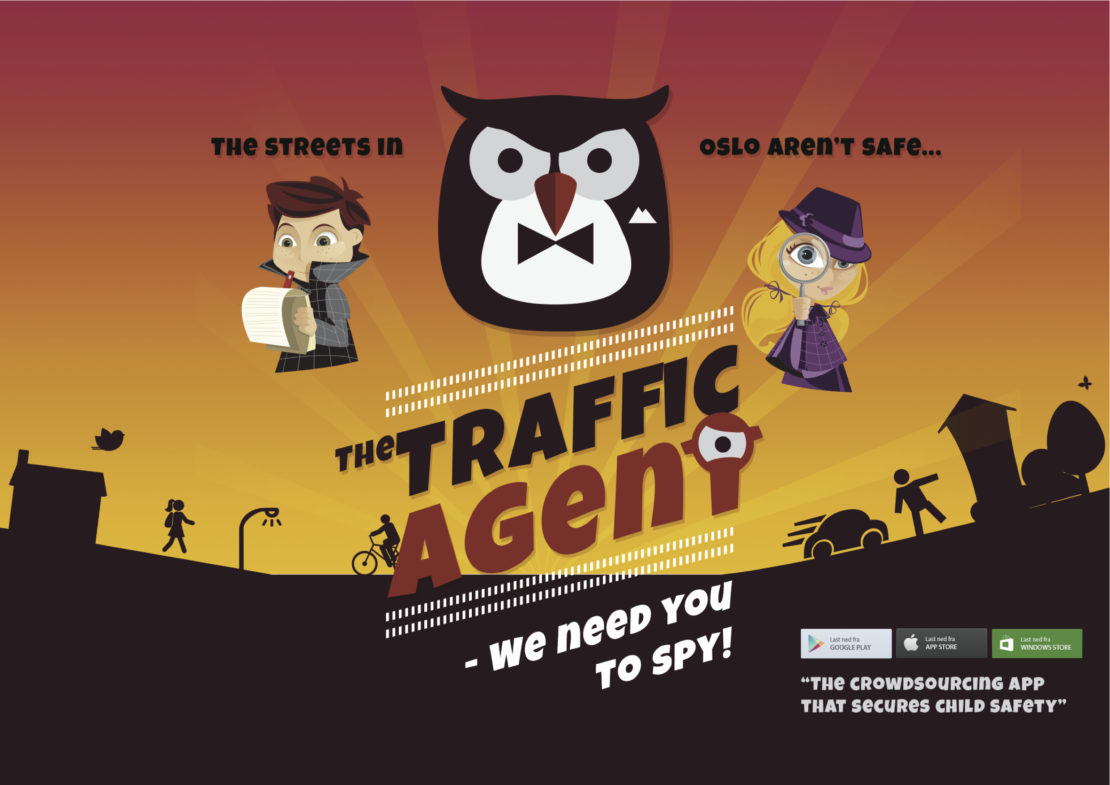Oslo keeps kids safe by making them 'secret smartphone agents'
The city of Oslo has created an app that keeps children safe on the way to school by enlisting them as "secret smartphone agents".
The first program of its kind, Traffic Agent encourages children to 'go undercover' to report dangerous intersections, damaged pavement, overgrown bushes, blown-out street lamps or illegally parked cars.
By giving city officials a direct line to children’s safety concerns, the GPS-tracked app has been sufficiently successful to be rolled out across the rest of the country.
"The goal is to make children and parents feel confident enough and safe enough to walk to school," says Vibeke Fredrikke Rørholt, the creator of the Traffic Agent app. She describes a call from an excited mother, whose child reported that he could not cross a street because of some overgrown bushes. "Two days later, the bushes were gone. Now he walks by and says, 'I did this, mum.' He’ll be a person who trusts his community and his municipality to fix things for him."

The city wants more of its 44,000 school-age children to walk or cycle to school, as part of plans to make the centre free of cars by 2019. To achieve that, its first priority was to make the streets safer.
Oslo's Agency of Urban Environment, the Institute for Transport Economics, the Education Authority and Capgemini Norge, a consulting and technology company, collaborated to create the interactive app. Rørholt, who works at the Agency of Urban Environment, also worked with schools, which get access to their pupils' data.
Since its debut in February 2015, the app has spread across 54 schools in Oslo (each with 200 to 700 students) and logged more than 5,790 reports and 2,402 trackings (where children mark a problem without specifying what it is). The idea is simple: students report problems, city planners and maintenance staff address them, and Oslo becomes a safer, greener place to live.
With $369,300 in funding from the city for this year, the app's creators use GPS tracking to crowdsource valuable datasets, providing officials with a real-time record of urban problems. Rørholt says funding will nearly double in 2018.
"Municipalities get all these letters that have to be dealt with, and it takes a lot of time. Now with Traffic Agent, we get all the questions electronically and can sort the data out to see where people want speed bumps, lower speed limits, traffic lights, crossings, and so on," says Rørholt.
The app is distinctive because it gives a voice to school-age children, who are often left out of urban planning. Each report generates an encouraging note from the app, which motivates children to use it further. Oslo has rebuilt several big crossings and pavements as a result of the report, and the traffic data has helped city planners decide where to build new schools.
The biggest hurdle in the app's development was putting measures in place to secure the data. To ensure anonymity, parents are assigned a seven-digit code that is shared with their children. Only their age and school are logged, and reports are only sent in once the child is 200 metres away from their house or flat.
The app is now available across Norway, and Rørholt is in talks to bring the technology to Canada. Her team is also exploring the possibility of developing a similar app for people navigating cities with disabilities.